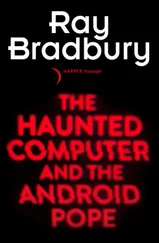Frankston, who was at that time co-developing VisiCalc. mentioned to Kapor that his publisher, Personal Software, was looking for new products. Peter Jennings met with Kapor, and in 1979 Personal Software contracted with Kapor and Rosenfeld to produce two new programs based on Tiny Troll , incorporating Dan Fylstra’s suggestions for additions and changes. The new programs were to be known as VisiTrend and VisiPlot. When the prototypes were finished, Personal Software offered Kapor a full-time job as new products manager and offered stock options as inducement for him to relocate to California with the company. Kapor accepted, and he signed an employment contract in March 1980.
It was a great time to have stock options in Personal Software. VisiCalc was racking up astonishing sales. But Kapor’s involvement in the company kept him from completing the final versions of VisiTrend and VisiPlot. Ever the gambler, he traded back his valuable stock options in exchange for release from his employment contract. He moved back to Cambridge and ended up borrowing money to live on while he finished the programs. When the programs hit the market in April 1981, his gamble turned out to have been a shrewd one. With his 1979 contract guaranteeing a 33 percent royalty, Kapor collected almost half a million dollars in royalties in one six-month period after the software came out.
By 1982, Personal Software had changed its name to VisiCorp, and 33 percent royalty contracts were things of the past. Fifteen and 20 and 25 percent royalties were more common. With VisiTrend/VisiPlot still selling at a healthy rate, VisiCorp, anxious to bail out of a steep royalty deal, decided to buy out that old contract for $1.2 million. With that money, Kapor started a company that he called Lotus and, inspired by the elegant design and outstanding success of VisiCalc, then set out to produce a real blockbuster.
But Kapor was one of those programmer-entrepreneurs who were visionary enough to conceive of a new kind of software, yet smart enough to realize that to make that vision a reality would require more than they could provide as programmers. He had reached the limits of his own programming skills, and he knew it. Although he still calls himself “the best BASIC hacker in the world,” he knew in 1982 that the days when one could write a serious commercial program in BASIC were numbered.
Kapor’s forte was now program design—that is, knowing what kind of program he wanted, and how he wanted the computer to present it to the user. He was particularly adept at designing that part of the program called the “user interface,” where the person meets the machine. But creating a good program takes more than a knack for design. It also takes an ability to translate that design into compact, efficient, fast programming code. Assembly language wizard Jonathan Sachs had just that ability, and Kapor’s collaboration with him on the new piece of software Kapor had envisioned led to a success that dwarfed Kapor’s previous triumphs.
Kapor knew that he wanted to put together a package of related programs that would help businesspeople with every aspect of preparing a presentation—a spreadsheet program, a graphics package for preparing charts, and a database manager. Sachs already had the rights to a spreadsheet package. With the IBM PC now out on the market, Kapor and Sachs knew that the PC’s microprocessor made possible the new level of program capability they were seeking. They also decided that the software publishing game had matured. It was time for a large-scale product introduction—the way the hardware boys did it.
Expensive booths at the major trade shows and more than a million dollars’ worth of media advertising prior to the new program’s release were only the beginning. More money was spent flying around the country making personal presentations to key figures, such as the management of the Businessland computer stores, to get the key retailers on the bandwagon before the program was offered to the public.
It certainly would have been possible for Kapor to bootstrap his new product, 1-2-3 , on the proceeds of his VisiCorp deal, and to buy his advertising and promotion as the profits rolled in, as they were virtually certain to do. But he decided that the only way to gamble was to gamble big. In order to put on the publicity blitz he envisioned, and to turn out the number of copies he was aiming for, Kapor had to resort to venture capital. Fortunately, he remembered one of the old-time users of Tiny Troll , a fellow named Ben Rosen who, Kapor knew, was a partner in a venture capital firm.
Kapor contacted Rosen and told him about his idea. Rosen was intrigued enough with it to ask for a simple precis of Kapor’s business plan to show his partner, L. J. Sevin. Nothing happened at first. Nothing ever happens at first with venture capitalists, because they do what they call “due diligence,” which means checking every single one of the fifty separate business references you provide. But finally, six weeks later, Rosen and Sevin took Kapor to dinner, and over salad they mentioned that they would like to invest in Lotus. How much did Kapor think it was worth? They put together a deal over dinner.
Rosen and Sevin put in $600,000 for the first round of financing, and other venture capitalists made it an even million dollars, for which the investors received 30 percent of the stock. Sevin-Rosen put another two and a half million dollars into Lotus before 1-2-3 was announced in the fall of 1982— accompanied by a million dollar-plus publicity campaign. The gamble worked spectacularly well—the company was profitable from the day 1-2-3 went on sale. The principals recouped their investment in record time. When they took Lotus public in late 1983, the investors made themselves and Kapor and Sachs millions more.
As for Electronic Arts, its very name evokes an unlikely juxtaposition of images in the mind’s eye. Indeed, Electronic Arts had little more than an image when it got started, but by the time its well-thought-out story hit the media, it was exactly the right image at exactly the right time—the best products of hot young programming stars, packaged by savvy marketers, backed by the winningest venture capitalists, all of them out to change the software landscape and make a fortune. The age of the programmer was over. The age of the “software artist” was not in full swing. Like Activision before it, EA adopted the metaphor of the software publisher as a kind of record company—with the programmers as the recording stars.
“Simple, hot, and deep,” was the slogan Electronic Arts’ founder and guiding spirit, Trip Hawkins, used to describe the kind of software Electronic Arts wanted to publish. “Fulfilling the promise of personal computers” was another slogan he used to describe Electronic Arts’ goals. EA has always been good at creating slogans. It billed itself as the first of a new generation of software publishers that would share a vision of the computer-enhanced future and a burning commitment to advance the state of the programming art. And EA told programmers that they were going to make software artists famous as well as rich.
In my opinion, EA had a lot more hype than substance when it started. Of course, I’m a competitor, so you’ll have to consider my analysis in that light. But I felt that many of EA’s products, particularly its early stuff, was mediocre. The company’s hype was superb, however, and the quality of its marketing has always been unusually good.
EA certainly did its best to fulfill its promises to programmers who wanted the same public recognition that musicians, writers, and other popular artists were granted. It hired a photographer from the rock scene, announced itself in the computer media with full-page group portraits, and put Bill Budge’s face in full-page ads in national magazines. EA packaged its software to look like record albums, complete with programmer biographies, liner notes, and attractive graphics. Its very modern logo was designed to be stylish enough to put on posters.
Читать дальше










